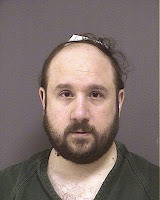==================
Rabbis Belsky and Wolmark, amongst those who signed the seruv against Aharon, were accused by Rabbi Abraham Rubin of being responsible for an attack in which Rabbi Rubin was kidnapped and beaten to force him to give a get.
==============================================
A TALE OF ABDUCTION , TORTURE Newsday March 8, 1998 by Dan Morrison
On the evening of Oct. 23, 1996, as Rabbi Abraham Rubin walked home from synagogue toward his Borough Park home, two cars collided up the block at the intersection of 56th Street and 14th Avenue.
Rubin, 31, ran toward the scene of the accident, an apparent diversion. A man standing on the sidewalk in front of him suddenly turned and started punching him and grabbed his glasses. He was dragged into a waiting van, he says, where several assailants began beating him.
He did not have to ask why.
For five years, Rubin, an Orthodox Jew, had been involved in a bitter dispute with his estranged wife.
Rubin says he has refused to this day to grant his wife a religious divorce, known as a get, until she lets him see his two children, who live with her in Montreal.
In an interview that elaborated on charges in a lawsuit he has filed against his alleged captors, Rubin described his abduction and torture.
"I was expecting it, sooner or later," he said.
Inside the van, he said, paid assailants wrapped a black laundry bag around his head. As he was handcuffed and choked, a voice said in sarcastic Yiddish, "Ess vet zein gut It will be good . . .
Mir vilen nor die zalst a yid We only want you to be a Jew ."
As the van sped through Brooklyn, Rubin said, he was asked if he knew Kol D'Alim G'var, a Talmudic commentary on the theory that might makes right.
The van stopped, and all the attackers left, except one, he said. "The rabbi is coming," he said he heard one of his assailants say. The door opened and new passengers entered.
"Do you understand English?" Rubin said he was asked. "Repeat my words."
Rubin said that when he refused to repeat the 12-line oath that grants a Jewish wife a divorce, punches and electric shocks rained down on him, first just a few and then a torrent - so many that he began reciting the "Viduy," the traditional Jewish deathbed prayer of repentance.
According to the lawsuit Rubin filed against his alleged captors, they zapped him with an electronic stun gun - in all, more than 30 times - including shocks to his genitals.
After passing out for about an hour, Rubin said, he was shaken awake. "Rabbi, wake up," a voice said. "The get is done."
He was transferred from the van to a car. "Don't be a moser," an informer, he said he was told. "If you know what's good for you, don't be a moser."
He said he was thrown from the car, still handcuffed and shrouded, and dumped outside a Brooklyn cemetery. A cab driver found the bloody rabbi and took him to the 66th Precinct. No arrests have been made in the attack.
Rubin, represented by Manhattan attorney Thomas Stickel, charges in a civil racketeering lawsuit filed in State Supreme Court in Brooklyn that Mendel Epstein, a well-known divorce mediator, took part in his "abduction and torture." Rubin said he learned the details of the plot during an investigation he and his friends conducted over several months.
Epstein's attorney has denied the charges. The suit also charges several other rabbis with planning or participating in the attack, including Martin Wolmark, a rabbi from the upstate Orthodox enclave of Monsey, and Israel Belsky, a rabbi from the Ditmas Park section of Brooklyn.
In a telephone interview, Belsky denied taking part in the attack. "I have no connection to any of this," he said. "The guy is a crackpot. The whole thing is a frivolous action."
Robert Rimberg, an attorney for Wolmark, also denied the charges listed in the lawsuit. "As far as I know, and based on my investigation, there is no basis for it," he said. [...]
While no one has ever been prosecuted for a get-related attack in New York City, that may soon change. Det. Robert Roddenberg of the 66th Precinct said Rubin's case might be the first of its kind to make it into a courtroom.
"Rubin is entitled to his day in court and the best investigation we can do," Roddenberg said. "Rubin is one of the few who have stood up. He was abducted. They beat the - - - out of him.
"They investigators spent an awful lot of time doing this case and it was really nitpicked to do it right," Roddenberg said. "It was done as well as any homicide case could be done. Just like not every homicide case gets solved, will this case get solved? That's up to the DA's office."
























